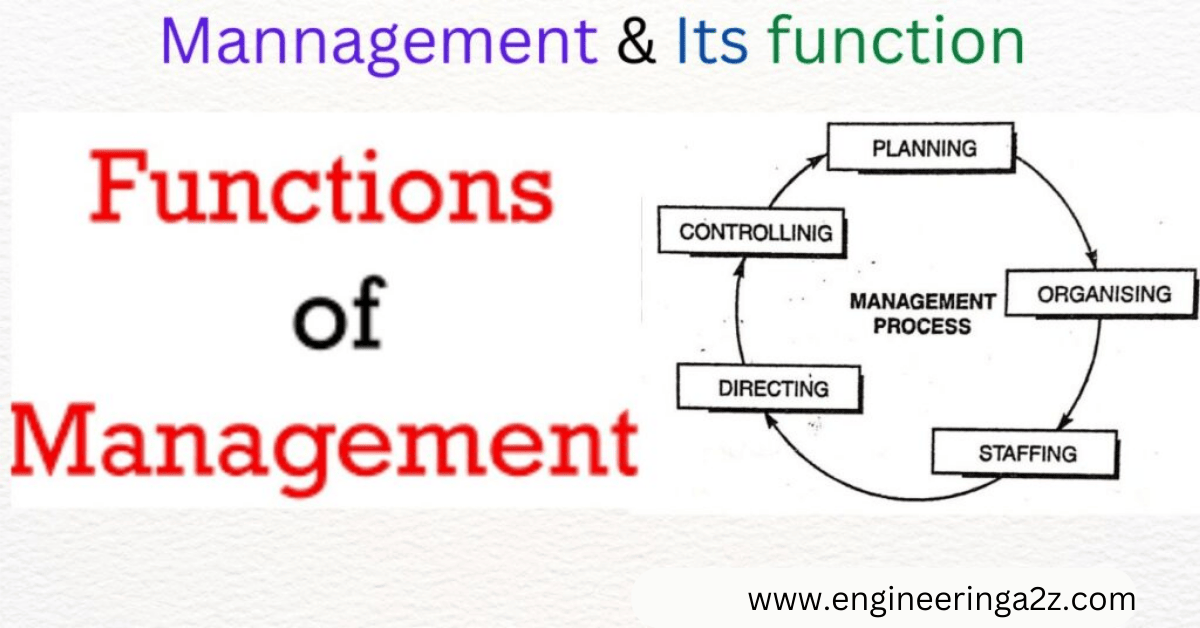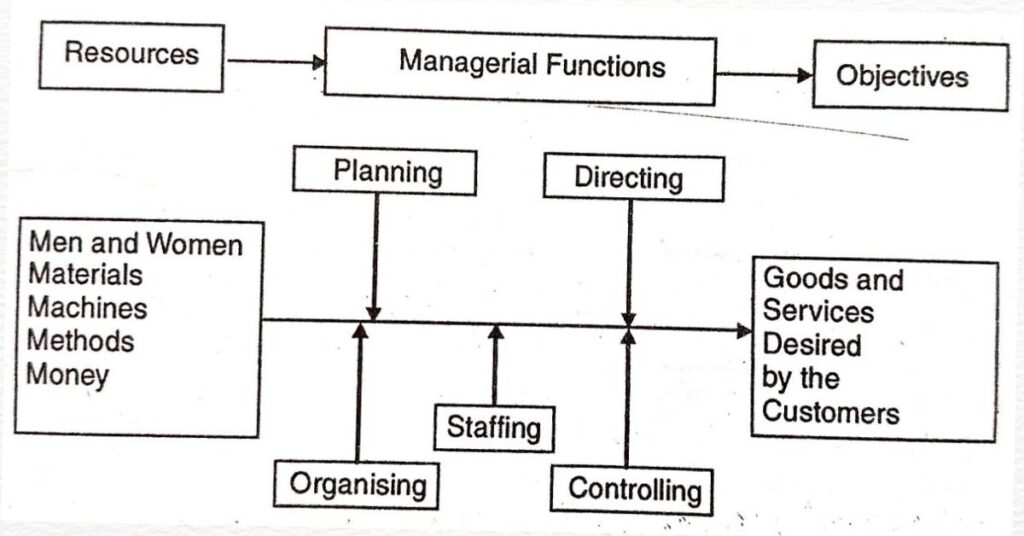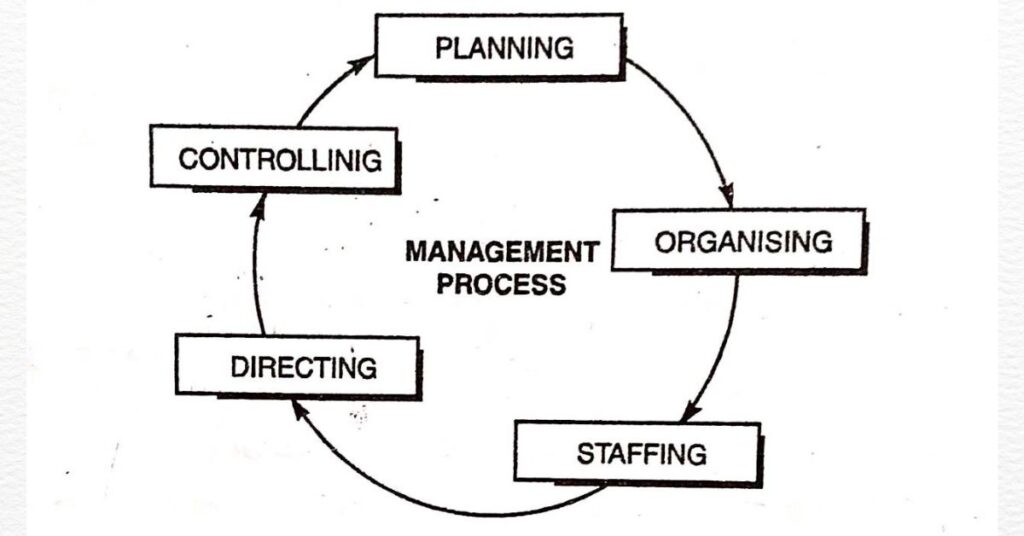
Table of Contents
Management
Traditionally, management is defined as an art of getting things done through others. The person who directs the efforts of others is known as ‘Manager’. He or she works with and through operative staff to achieve the organisation ’s goals.
According to “Henry Fayol
To manage is to forecast & plan, to organise, to command, to coordinate & to control.
According to J.D. mooney
Management is the art of directing & inspiring people.
According to Mary Parker Follett
Management is the of getting things done through people.
Process of Management
Management, as a process, refers to a set of interconnected functions or elements that work together to achieve set targets through the effective use of human and other resources. It involves five functions, namely, (a) planning, (b) organising, (c) staffing, (d) directing or leading and (e) controlling. As shown in Fig. it is through the performance of these functions that management is able to effectively utilise manpower and physical resources such as money or capital, machines, materials, methods, etc. to produce goods and services required by the society.

Management is called a process because it comprises a series of functions that lead to the achievement of certain objectives. As shown in Fig. management process involves planning. organising, staffing, directing and controlling. These are the basic functions which every manager performs for the achievement of certain goals. The manager creates plans to make these goals a reality. He organises, directs and controls the activities of the people working under him.He will continue to perform out these responsibilities as long as the business unit is active. Management, in fact, is a continuous process, as depicted.in given fig.
Functions of Management
The management performs the following functions :

(1) Planning :- Planning is the first basic function of management. It determines the objectives to be achieved and the course of action to be followed to achieve them. It is a mental process requiring the use of intellectual faculties, foresight and sound judgement. It involves deciding in advance what to do it, where to do it, how to do it, who is to do it and how the results are to be evaluated.
Planning involves systematic thinking about the ways and the means for the accomplishment of predetermined objectives of the organisation. The features of planning are as follows:
(a) Planning is a psychological process. It requires mental activity to make future plans..
(b)It helps in consciously identifying the future course of action. Every action is preceded by proper planning.
(c) It involves taking decisions after looking into the facts.
(d) It is a primary function of management. Without planning, no other action can be taken.
(2) Organising :- According to Louis A.Allen, “Organising involves identification and grouping the activities to be performed and dividing them among the individuals and creating authority and responsibility relationships among them for the accomplishment of organisational objectives”.
Organising is the process of establishing relationships among the members of the enterprise. Relationships are formed based on authority and responsibility. Each member of the organisation is given a specific responsibility or duty necessary authority to perform the duty.
Organising involves the following steps :
(1) Identification of activities required for the achievement of objectives and
Implementation of plans.
(ii) Grouping of activities so as to create self-contained jobs.
(ii) Assignment of jobs to employees.
(iv) Creation of authority-responsibility relationships between the superiors and
the subordinates.
(3) Staffing :- According to Koontz and O’ Donnell, “The managerial function of staffing involves manning the organisational structure through proper and effective selection, appraisal, and development of personnel to fill the roles designed into the structure”. The staffing function is concerned with effective management of human resources in the enterprise.
Staffing involves the following activities:
(i) Manpower planning to determine the number and the kinds of personnel required.
(ii) Recruitment or attracting suitable persons to seek jobs in the enterprise.
(iii) Selection of the most suitable persons for the jobs under consideration. (iv) Placement and orientation of employees
(iv) Performance appraisal of employees.
(4) Directing or Leading :- According to Koontz and O’Donnell, “Directing embraces those activities which are related to guiding and supervising subordinates.” Directing involves communicating and providing leadership to the subordinates and motivating them for the achievement of organisational objectives.
Directing concerns the total manner in which a manager influences the actions of subordinates. It does so through (4) communication, (b) leadership and (c) motivation.






Comments (1)
Keep on working, great job!